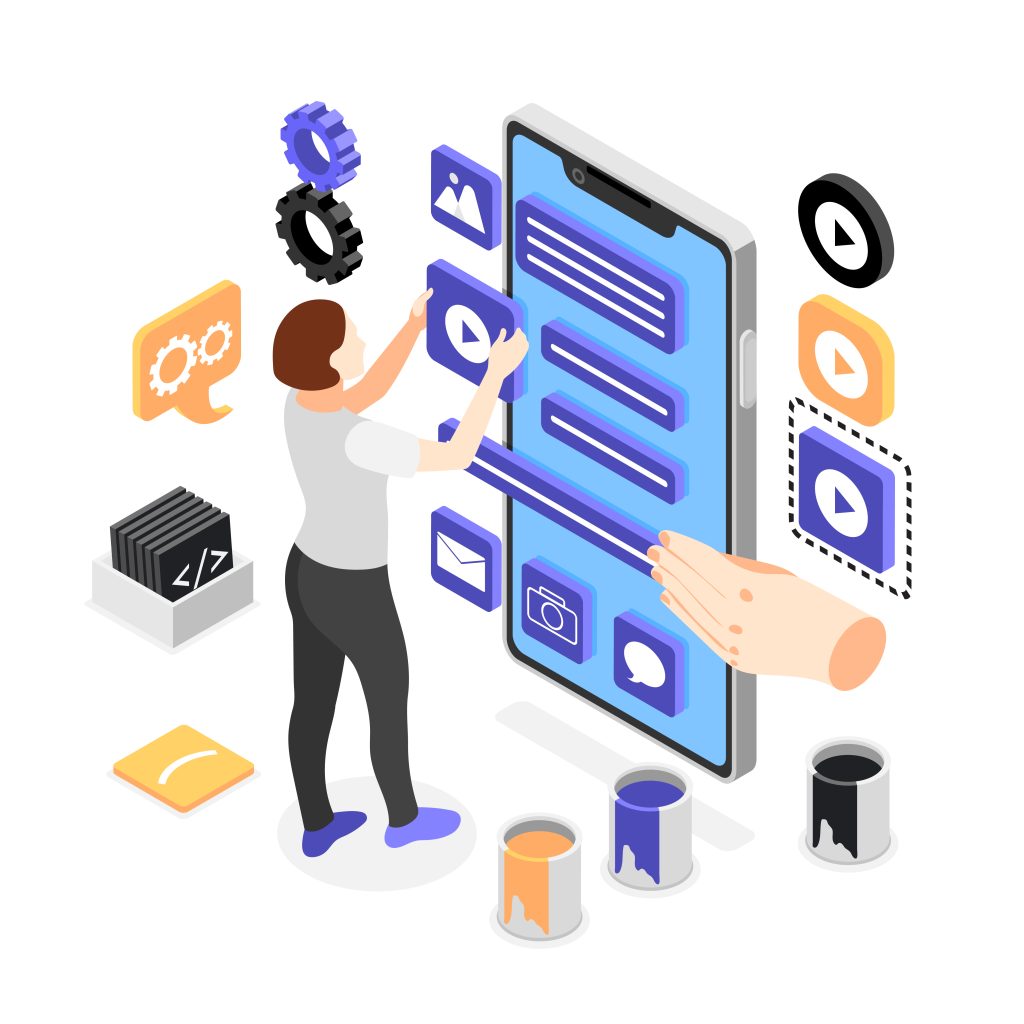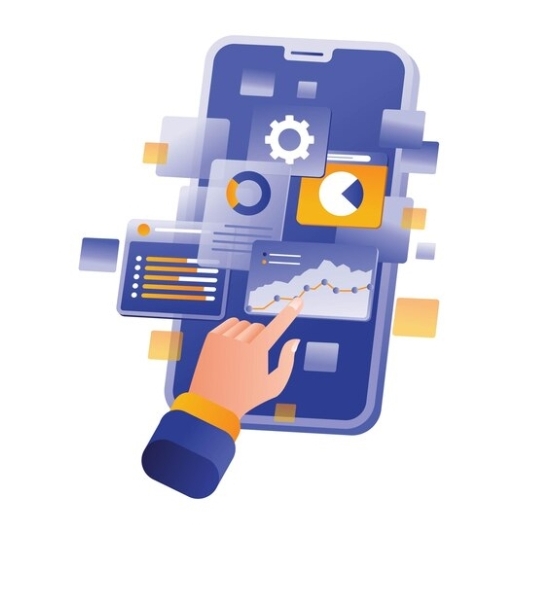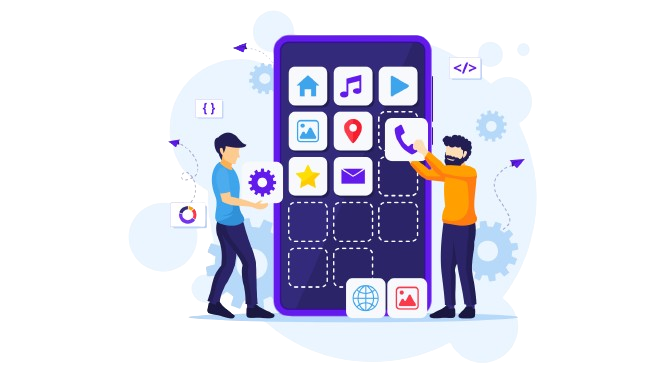It is as tough to live with no physical energy as it is living with mental issues. You feel like you can’t do anything properly. You are exhausted all day even while doing daily chores.
That’s when you need to say yes to a rigorous health and fitness routine for yourself. You can look out for fitness trainers and healthcare coaches to help you build a proactive life. But, that’d be a hassle to take out time for physical fitness classes.
Don’t worry, we’re never limited on options in today’s digital world. Over the past few years, when health and fitness emerged as a priority (thanks to Covid-19 outbreak that inculcated this reality check), fitness apps have become increasingly popular too.
Nowadays, fitness applications are getting hyped up as a practical means of goal-setting, tracking exercise regimens, keeping an eye on fitness metrics like BMR, BMI, water retention, and getting access to customized workout routines and meal plans. Fitness applications provide users with food and nutrition information they eat each day, including details on protein, fiber, carbohydrates, iron, and other nutrients. In short, they can elevate your health and fitness game to the next level and help you make the best version of yourself.
Now, looking at the business side of it. It is needless to say that fitness app development brings multitude of benefits for fitness enthusiasts, entrepreneurs and app development companies. They offer great potential value including community building and support, managing “fitness at home” and monetary gains for app developers.
If you’re considering developing a fitness mobile app, look no further as your quest to explore step-by-step process, essential aspects, key features, and costs to develop a feature-rich fitness app ends here.
Let’s begin!
Fitness App Development Industry – Overview

Before you embark on the journey of fitness app development, it is better to test the waters as a first step. Not to worry though, as Statistica reported that the fitness app development market is poised to gain a revenue of US $6.9 billion by 2024. From 2024 to 2028, with an annual growth rate CAGR of 9.99%, the market volume is expected to reach US $10.04 billion. These figures are enough to make businesses gravitate towards the potential value that this market will offer in terms of revenue.
Coming right to the logical reasoning and other green flags for analyzing the future need of a product or service – i.e., fitness apps, in our case.
Covid-19 transformed the world upside down and technological advancements rolled in and out more often than ever. Remote working became the ‘new normal’ and everything simply shifted ‘at home’, including fitness centers, and gyms. So, what could be the solution? Due to improvements in consumer health consciousness, wearable technology, and technology innovations, the need to use your own equipment and fitness gadgets by staying at home got huge popularity.
Types of Fitness Apps
The type of a fitness app decides app features, functionality and user base for it. There are specific apps that serve a specialized fitness niche, while many are built on generic features and fall under following categories:
1. Activity Tracking Apps
Activity tracking apps are especially designed for smartphones, wearables and wristwatches. They use accelerometers, sensors or GPS technology to track user’s physical activity levels such as steps count, distance traveled, number of stairs climbed, and calories burned. Activity tracking applications support a healthier lifestyle and help users reach their fitness goals, making them ideal for both fitness novices and enthusiasts. Some of the widely used tracking apps are Google Fit and Fitbit.
2. Diet & Nutrition Apps
Nutrition and diet apps help you keep a check on what you eat in a day. They are a gift for people who are conscious of their dietary intakes and calorie counts. They offer features such as calorie counting, meal logging, meal planning and guide about personalized nutrition recommendations. Popular examples include MyFitnessPal and Lifesum.
3. Workout Training & Exercise Guidance Apps
A workout training app provides different types of workout schedules for users to achieve their fitness goals. These apps have a huge potential with respect to incorporating multiple functionalities such as progress tracking, story-driven workouts, social interaction and community support and motivation. In highly competitive fitness and workout apps, leveraging these features provide significant value and help your app stand out from the crowd. Nike Training Club and Fiit app are the top workout apps for enthusiastic users.
4. Yoga & Meditation App
Yoga and meditation applications provide guided meditation sessions, breathing exercises, flexibility exercises, and relaxation techniques for your mental and physical health.
With a variety of yoga techniques, special meditation tools, and comprehensive instructions, users can tailor their practice to suit their own tastes. Consistency in their mindfulness routines is encouraged by the integration of progress tracking, personalized recommendations, and reminders inside these apps. Some of the notable yoga and meditation apps are Calm, Headspace and Yoga Studio.
5. FemTech Apps
FemTech apps is a particular category for women health tracking apps. These apps address female healthcare and reproductive services by monitoring their menstrual cycle, ovulation days tracking, pregnancy guidelines and menopause management. Flo Health is the most widely used FemTech app.
6. Personal Trainer Apps
Personal trainer apps, as their name suggests, provide virtual or online trainers, fitness coaching sessions, online healthcare and training activities and workout plans. Examples include Trainerize and TrueCoach.

Must-Have Features for Your Fitness App MVP
Before jumping on the bandwagon of building a fitness mobile app, it is important to list down key features that a fitness development app must include:
User Profiles
When creating a user profile, users must be able to fill out their profiles with their personal data, such as name, age, height, weight, gender, and fitness level. This data is important for both users and app development admins. Admin is able to provide personalized plans, physical activity monitors, and fitness regimens based on your personal data. Users may easily access subscription plans, past workout records, progress monitoring, bonuses, and other relevant information through their profiles.
User Registration/Login
The app should include a feature where users can conveniently log into their profiles through their social media accounts such as Email, Facebook, Instagram or Twitter credentials.
Workout tracking
Another important feature that your fitness app must have is the collection of fitness classes with educational videos. It should allow users to record exercises, set objectives, and monitor progress. Moreover, your robust fitness app must seamlessly integrate and synchronize with wearable devices. Integration with wearable technology to track data in real time is the need of the hour after the proliferation of smart watches and other wearable devices.
Nutrition Guidance
Nutritional guidance, meal plans and nutritional data should be included and readily accessible byu your app users. It should be possible for users to record their hydration levels, meals, and snacks for calorie tracking purposes. Furthermore, integrating with food recipes can help promote healthy eating practices and achieve weight control objectives customized as per the needs of every user.
Social Media Integration & Sharing
Social media platform integration is a crucial element that you must include in your fitness app development feature list. Users should be able to tell their family and friends about their accomplishments. They can send invites and receive motivation from sharing their fitness achievements on community forums, which also inspires others to adopt better lifestyles. App developers can also add a feature of conducting group exercises to foster motivation for achieving workout schedules.
Analytics & Insights
Enabling users to monitor their advancement and chart their successes over time is crucial for preserving motivation. Apps for health and fitness should provide a comprehensive analytics and progress dashboard that shows key performance indicators and metrics including body measurements, weight loss/gain, fitness milestones, and goal adherence.
Step-By-Step Guide To Develop a Fitness App
No one can develop a scalable and functional fitness app without going through a multi-step process. Here’s our comprehensive guide to break down fitness application development for you.
Step 1: Conceptualization
The first step to develop a fitness app is to conceptualize user base, app objectives, target audience, and required features. Plan your app’s goals, identify user needs, competitors and analyze gaps in the market.
Step 2: App Type & App Design
Once you’ve conducted SWOT analysis, it’s time to determine app type that is well-suited with the needs and requirements of your potential audience. To see how the app will look and feel, make wireframes and mockups of the user interface. This step also involves designing your app. Make sure the UI/UX design interfaces are aesthetically pleasing and user-friendly for your audience.
Step 3: Development
The development team works to make your fitness app idea a reality during this step of the development process for fitness apps. App developers will build the front-end and back-end interface, as well as integrate any third-party services, social integration and APIs in this stage. Developers employ the appropriate technology stack and crucial features like user profiles, activity monitoring, workout regimens, revenue models, and nutrition logging, depending on the platform (iOS, Android, or cross-platform) it is built for.
Step 4: Testing
Conduct agile testing to ensure your app will function in the optimal wa. ed. Use a combination of manual and automated testing, and consider beta testing with real users to gather valuable feedback and identify any issues or bugs that need to be addressed.
Step 5: App Launch & Deployment
Launch the app and monitor its performance.
Read app store submission guidelines and prepare your app in accordance with the platform guidelines and requirements. To boost visibility and downloads, enhance your app store listing with pertinent keywords, enticing descriptions, and eye-catching images. Last but not the least, launch the app and keenly monitor its performance in real-time.

Step 6: Post-Launch Maintenance & Support
Once you launch your fitness app, it is important to check its performance, features, improvements and bug fixes. Agile testing methodology will be a plus at this stage of development.
Estimated Cost of Fitness Application Development
Building a fitness app can be costly and budget-friendly. The cost hinges on various factors such as app functionality, developer location, app complexity, app hosting, regulatory compliance, tech stack, and development team’s skills and experience. Furthermore, the cost estimation can be divided into maintenance costs including the cost of charges for server hosting, app upgrades, bug repairs, security patches, and user feedback.
The approximate range of expenses related to the development of a fitness app are as follows:
- A basic application with only a handful of generic features can cost you about $20,000.
- A high-performing and feature-rich advanced fitness app can reach up to $100,000.
Wrapping Up
In a cut throat and fast-paced digital world, staying ahead in the market is what generally makes you a market leader. Fitness application development seems a piece of cake, but can be taxing if a systematic approach is not followed.
Building a scalable and compelling fitness app can be cost-effective and convenient with Stackup Solutions. Our professionals have hands-on experience and required skills to integrate your requirements and needs and deliver secure and feature-rich fitness app development solutions. Our scalable architecture, industry rules, and user-centric design approach guarantee that your fitness software not only meets but surpasses the expectations of your users. Hit us up and we’d be thrilled to assist you!




